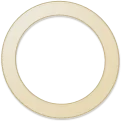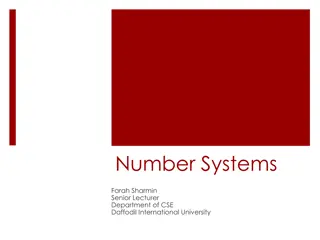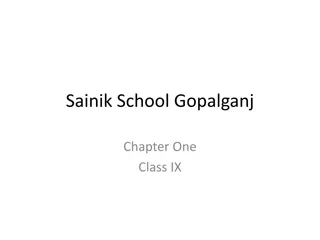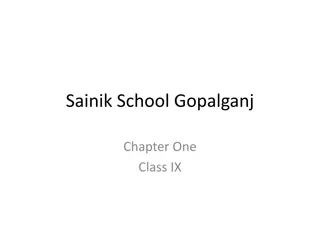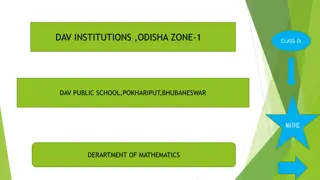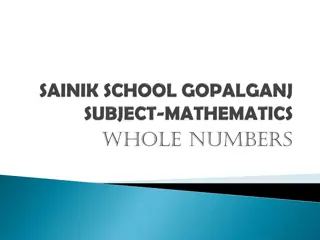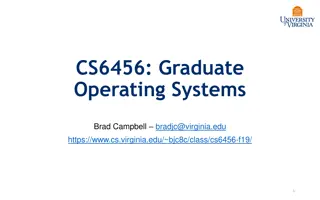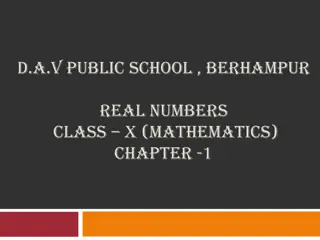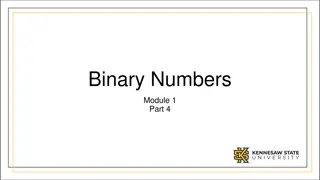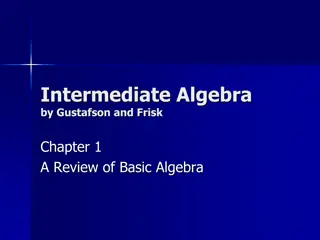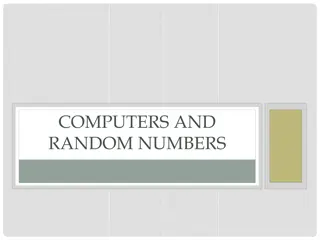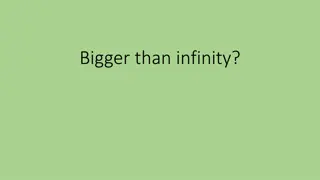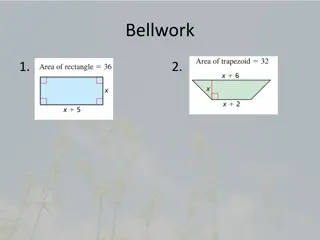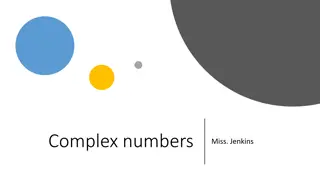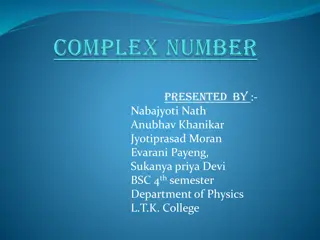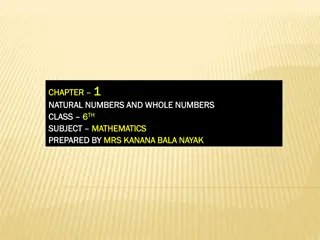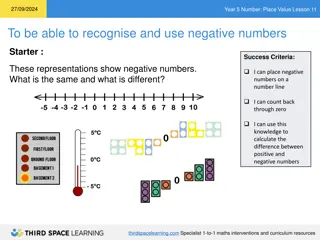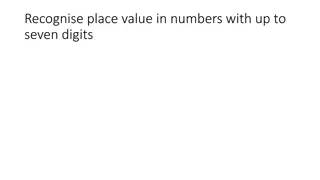Exploring Real Numbers and Number Systems
Dive into the world of real numbers with topics ranging from the definition of real numbers to Euclid's Division Algorithm and the Fundamental Theorem of Arithmetic. Discover the properties of rational and irrational numbers, learn to find the highest common factor (HCF) and least common multiple (LCM), and explore the decimal expansion of rational numbers. Test your knowledge with quizzes on integers, rational numbers, and more.
Download Presentation

Please find below an Image/Link to download the presentation.
The content on the website is provided AS IS for your information and personal use only. It may not be sold, licensed, or shared on other websites without obtaining consent from the author. Download presentation by click this link. If you encounter any issues during the download, it is possible that the publisher has removed the file from their server.
E N D
Presentation Transcript
TOPIC REAL NUMBERS
Sub Topics Revisiting the Number System Definition of Real Number Euclid s Division Lemma Euclid s Division Algorithm to find HCF of 2 given positive Integers. Activity to find HCF Prime Factorization of Composite Numbers Fundamental Theorem of Arithmetic. Application of Fundamental Theorem of Arithmetic (HCF and LCM of two or more numbers and some other problems) Revisiting Irrational Numbers Decimal Expansion of Rational Numbers Art Integration
Learning Objectives To express the division of numbers as dividend = (divisor x quotient ) + remainder , and generalise this relation for any positive integers a and b . To understand Euclid s Division Lemma To understand the difference between Euclid s Division Lemma and Euclid s Division Algorithm To be able to find out HCF of two given numbers using Euclid s Division Algorithm To be able to find HCF and LCM using Prime Factorization To be able to use the formula HCF x LCM = Product of two Numbers To be able to understand Fundamental Theorem of Arithmetic To be able to prove the irrationality of a given Number To be able to define Rational Numbers on the basis of their decimal expansions To be able to decide whether the given Rational Number is terminating or non-terminating decimal by looking at its denominator
DEFINITION OF REAL NUMBERS Real numbers can be defined as the union of both the rational and irrational numbers. They can be both positive and negative and are denoted by the symbol R . All the natural numbers, whole numbers, integers, rational and irrational numbers come under this category. Examples : 0, 5 ,-10 , , - , 0.123, 2. 34 , 5.010110111....... , 5
QUIZ TIME Is every integer a rational number ? Is every whole number a natural number ? Is every whole number an integer ? Is every rational number a real number ? Do real numbers include irrational numbers ?
Lemma and Algorithm A Lemma is a proven statement used for proving another statement. An Algorithm is a series of well defined steps which gives a procedure for solving a type of problem.
Statement of Euclids Division Lemma If a and b be two given positive integers, then there exist unique integers q and r such that a = b x q + r , 0 r b . Note : 1. Although Euclid s Division Lemma is stated for only positive integers a and b, but it is also true when a and b are any kind of integers , but b 0. 2. If b divides a, then r = 0 and q is the quotient . 3. If b > a , then q = 0 and r = a .
HCF of two positive integers using Euclids Division Algorithm
To Find HCF of two given numbers using Euclid s Division Algorithm Example : Find HCF of 66 and 420 by using Euclid s Division Algorithm Sol : As 420 > 66 so, a = 420 and b = 66 420 = 66 x 6 + 24 66 = 24 x 2 +18 24 = 18 x 1 + 6 18 = 6 x 3 + 0 Hence , HCF = 6
Activity to find HCF METHOD Paper folding MATERIALS REQUIRED Different sheet of colored papers, pair of scissors, glue, marker and ruler. PROCEDURE 1. Take any two positive integer a and b (a>b). Example :- a=15 , b= 6. 2. Cut a rectangular sheet of length 15cm and breadth 6cm. 3. The maximum length of the square that can be fitted in the given rectangular sheet is 6cm. Cut a square sheet of each side 6cm from a different color paper.
Activity continued... 4. Paste this square on rectangle and we can find two such squares can be fit. 5. After pasting two square , a rectangular shape is left of dimension 3cm x 6cm. 6. We can write a mathematical expression for the shape obtained as 15 = 6 2+3. 7. Now consider the rectangle of dimension 3cm by 6cm. Repeat the same procedure in this rectangle . 8. We find two squares of each side 3cm is being fit into the rectangle. 9. Keep on filling the rectangle with squares till the initial rectangle is completely covered.
Activity continued... 10. The length of last square is the HCF of given positive integers. OBSERVATION So we observe that : 1. In mathematical form, 15 = 6 x 2 +3 6 = 3 x 2 +0 2. Here the length of the last square is 3cm . So HCF(15, 6) = 3 CONCLUSION By paper cutting and pasting , we can find the HCF of two given positive integers by applying Euclid s Division Algorithm.
WORKSHEET -1 ( Euclid s Division Lemma) 1. Find the HCF of the following numbers a) 280 , 12 b) 288 , 120 c) 867 , 254 d) 135 , 225 e) 441 , 567 , 693 2. Use Euclid s Division Lemma to show that one and only one out of n , n+1 and n+2 is divisible by 3, where n is any positive integer.
Prime Factorization of Composite Numbers The natural numbers like 2, 3, 5, 7, 11 . are prime numbers as they have exactly two factors. The natural numbers like 4, 6, 8, 9, 10 are composite numbers as they have more than two factors. These composite numbers can be written as product of primes. We can find the prime factorization of a composite number in two different ways as shown below. Division method Tree method Hence , Prime Factorization of 48 = 2x2x2x2x3 = 24x3
WORKSHEET 2 (PRIME FACTORIZATION ) From the given fig. Find the value of x ,y and z. 1. Find the prime factorization of the following numbers by division method. a) 156 b) 5005 c) 7429 Find the prime factorization of the following numbers by factor tree method. a) 275 b) 120 c) 4284 3. 2.
Fundamental Theorem of Arithmetic Statement : Every composite number can be expressed as a product of primes and this factorization is unique, apart from the order in which the prime factors occur. Example : 56 = 2 x 2 x 2 x 7 = 7 x 2 x 2 x 2 = 2 x 7 x 2 x 2 Hence the prime factorization of a number can be written in any order, but writing in ascending order is advisable.
Application of Fundamental Theorem of Arithmetic 1. Finding HCF of two or more numbers. Find the prime factorization of the given numbers. Express the prime factorization in the exponential form. Find the product of common factors with lowest power. 2. Finding LCM of two or more numbers. Find the prime factorization of the given numbers. Express the prime factorization in the exponential form. Find the product of all the factors involved with highest power. Example : Find the HCF and LCM of 12, 15 and 21 by using Fundamental Theorem of Arithmetic . Sol. 12 = 2 x 3 15 = 3 x 5 21 = 3 x 7 Hence, HCF = 3 LCM = 2 x 3 x 5 x 7 = 420
Application of Fundamental Theorem of Arithmetic 3. The product of LCM and HCF of two numbers = Product of the two numbers. 4. Show that 7 x 11 x 13 + 13 is a composite number. Sol. Let the given number be denoted by n. So, n = 7 x 11 x 13 + 13 = 13 ( 7 x 11 + 1 ) = 13 ( 77 +1 ) = 13 x 78 This means that n has a factor 13 other than 1 and n . Hence n is a composite number. 5. Check whether 6 can end with the digit 0 for any natural number n . Sol. 6 = 2 x 3 6 = ( 2 x 3 ) = 2 x 3 If the number 6 , for any n, were to end with the digit 0 then , it would have the factors as 2 and 5. but here 5 is not a factor of 6 . Hence, 6 can never end with 0 for any n.
WORKSHEET -3 (Fundamental Theorem of Arithmetic) 1. Find the HCF and LCM of the following numbers a) 24, 60, 150 b) 6, 72, 120 Show that 2 x 3 x 7 x 11 x 17 +11 is a composite number. Check whether 12 can end with the digit 0 for any natural number n . Find the LCM and HCF of 26 and 91 , and verify that LCM x HCF = Product of the two numbers. 2. 3. 4.
Proof of irrationality of some numbers Question : Prove that 2 is an irrational number. Solution : Let 2 be a rational number Therefore, 2= p/q On squaring both sides, we get p = 2q ...(1) Clearly, 2 is a factor of 2q 2 is a factor of p 2 is a factor of p [ p and q are in their least terms i.e., HCF of (p , q )=1 and q 0] [since, 2q =p ] Let p =2 m for all m ( where m is a positive integer) Squaring both sides, we get p = 4 m ...(2) From (1) and (2), we get 2q = 4m q = 2m Clearly, 2 is a factor of 2m 2 is a factor of q [since, q = 2m ] 2 is a factor of q Thus, we see that both p and q have common factor 2 which is a contradiction that H.C.F. of (p,q)= 1 Therefore, Our supposition is wrong Hence 2 is not a rational number i.e., irrational number
SOME PROBLEMS BASED ON IRRATIONAL NUMBERS EXAMPLE : Prove that 3 + 2 5 is an irrational number , where 5 is an irrational number.
IMPORTANT POINTS Every rational number can be expressed as p/q , where p and q are integers having no common factor (other than 1 ) and q 0. If p and q are integers q 0 then p/q is a rational number. If p be a prime , then p is an irrational number. If a prime p divides a , then p divides a where a is an integer ( positive integer) . If HCF (p , q) = 1 , then p and q are called co-prime or relatively prime integers. Positive integers p and q are co-prime , if 1 is the only common factor of p and q.
WORKSHEET - 4 Answer the following in one word, one sentence or as per the exact requirement : (a) Let p and q be two distinct prime numbers. Write HCF (p , q). (b) Fill in the blank space in the statement given below : i) If p be a prime, then p is _______number. ii) If p/q is a rational number then p and q are _____ . (c) 27 is an irrational number. Justify the statement. Prove that the following numbers are irrational : (a) 2 3 4 (b) 1/ 2 1. 2. (c) 3 + 5
DECIMAL EXPANSION OF RATIONAL NUMBERS Let us express the following decimal numbers in form p/q where p and q are co- prime numbers and q 0 i) ii) In the above examples the terminating decimal expansion reduces to a rational number of the form p/q where p and q are co-prime numbers and q is of the form ( n and m are non negative integers). Let us express the following rational numbers in form of decimals. i) ii) So these examples show us how we can convert a rational number of the form p/q where p and q are co-prime numbers and q is of the form 2n 5m to a terminating decimal. note : If in a rational number of p/q form q is not in the form of 2n 5m,where n and m are non negative integers then its decimal expansion is non-terminating repeating.
WORKSHEET - 5 Without actually performing the long division, state whether the following rational numbers will have a terminating or non-terminating repeating decimal expansion: (a) 17/8 (b) 64/455 2. The following real numbers have decimal expansions as given below. In each case decide whether they are rational or not. If they are rational and of the form p/q write prime factors of q so that p and q are co-primes. (a) 43.123 (b) 0.120120012000...... 3. Express 0.234234234......in the form p/q where p and q are co-prime integers also find the prime factorisation of q . 1. (c)77/210 (d)35/50 (c)43.123
SUMMARY A lemma is a proven statement used for proving another statement. An algorithm is a series of well-defined steps which gives a procedure for solving a type of problems. EUCLID S DIVISION LEMMA If a and b be two given positive integers and a>b then there exist unique integers q and r such that a = bq + r where 0 r < b. We can find HCF of two or more numbers by using Euclid s division algorithm (lemma). FUNDAMENTAL THEOREM OF ARITHMETIC- Every composite number can be expressed as product of primes in a unique way apart from the order in which the prime factors occur. We can find both HCF and LCM of two or more numbers by using fundamental theorem of arithmetic.
Steps to find HCF and LCM of given numbers by using Fundamental Theorem of Arithmetic- Find the prime factorization of the given numbers and express in exponential form. HCF = product of only common factors with least power. LCM = product of all the factors involved with highest power. If a and b are two positive numbers, then HCF(a, b) x LCM(a, b) = a x b If p1and p2 are two distinct prime numbers, then HCF(p1, p2) = 1 The HCF of two co-prime numbers = 1 and LCM = product of the given co-prime numbers If p is a prime number and p divides a2 then p divides a , where a is a positive integer.
If p be a prime, then p is an irrational number. Every rational number can be expressed as p/q, where p and q are co-prime integers and q 0. If a = p/q, where p and q are co-prime and q = 2nx 5m (n and m are whole numbers), then the rational number a has terminating decimal expansion. If a = p/q, where p and q are co-prime and q can not be written as 2nx 5m (n and m are whole numbers), then the decimal expansion of a is non-terminating recurring. Decimal representation of every rational number is either terminating or non-terminating recurring. If the decimal representation of a real number is non-terminating non-recurring , then it is an irrational number.




